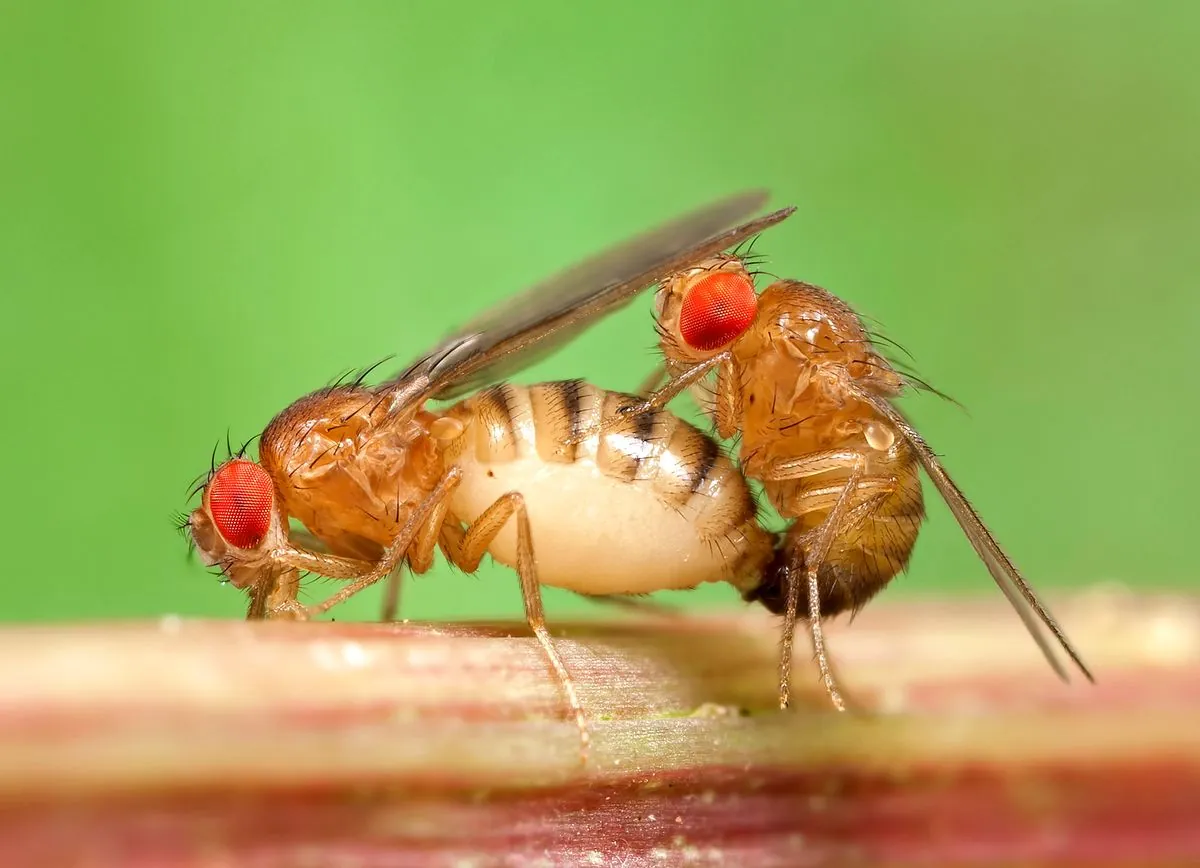Fruit Fly Brain Mapping Breakthrough: Insights into Animal Cognition
Scientists map adult fruit fly brain, revealing 50 million neural connections. This milestone in neurobiology could provide insights into brain function across species, including humans.

In a groundbreaking development, scientists have successfully mapped the entire brain of an adult fruit fly, marking a significant milestone in neurobiological research. The study, announced on October 3, 2024, reveals over 50 million connections between more than 139,000 neurons in the Drosophila melanogaster brain.
This achievement, accomplished by the international FlyWire Consortium, provides a comprehensive wiring diagram known as a connectome. The fruit fly brain, measuring less than 1 mm wide, has been a subject of fascination for researchers due to its complexity and potential insights into animal cognition.
Sebastian Seung, a professor at Princeton University, emphasized the importance of this research, stating:
"If we can truly understand how any brain functions, it's bound to tell us something about all brains."
The fruit fly has been a cornerstone of genetic research since the early 1900s, with its genome fully sequenced in 2000. Remarkably, these tiny insects share about 75% of disease-causing genes with humans, making them valuable models for studying various neurological conditions.
Mala Murthy, another co-leader of the research, highlighted the sophisticated behaviors exhibited by fruit flies, including walking, flying, learning, memory, navigation, feeding, and social interactions. These behaviors, solved by a brain of only about 100,000 neurons (compared to 86 billion in humans), make fruit flies an ideal subject for understanding the relationship between brain wiring and animal behavior.
The studies conducted as part of this research explored various aspects of the fruit fly brain:
- Analysis of circuits controlling walking and halting behaviors
- Examination of taste networks and grooming circuits
- Investigation of the visual system, including motion and color processing
- Identification of "hub neurons" that may accelerate information flow

This research builds upon previous studies of simpler organisms like the Caenorhabditis elegans worm and fruit fly larvae. The adult fruit fly brain, however, presents more complex behaviors for study.
Interestingly, fruit flies were the first animals sent into outer space in 1947, and have since been used to study the effects of space travel on biology. Their short lifespan of 40-50 days and the ability to learn and remember simple tasks make them excellent subjects for research on aging, longevity, and cognitive functions.
The fruit fly brain, despite its tiny size of about 0.1 cubic millimeters, exhibits remarkable capabilities. These insects can distinguish between complex odors, make decisions based on previous experiences, and even display social behaviors like courtship and aggression. They also possess a circadian rhythm similar to humans, making them valuable in sleep pattern studies.
This comprehensive brain mapping could potentially lead to breakthroughs in understanding neurodegenerative diseases like Alzheimer's, as fruit flies have been extensively used in such research. Additionally, their ability to perceive light, color, and motion, combined with their use in studies on alcohol tolerance and the genetic basis of sleep patterns, further underscores their importance in neuroscience.
As we continue to unravel the mysteries of the fruit fly brain, we may gain invaluable insights into the functioning of more complex brains, including our own. This milestone in neurobiological research opens new avenues for understanding cognition, behavior, and the intricate workings of the brain across the animal kingdom.


































